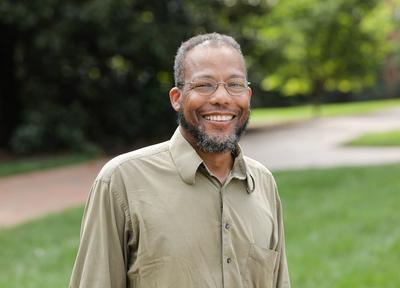Furman plays role in $5 million NOAA grant, spurs climate resilience

Hurricanes don’t discriminate where they hit. It’s in the aftermath of violent storms, heat waves and intense rain events where climate inequity shows up.
For example, if you own a home on the coast, chances are you have insurance to rebuild. But if you live more inland in perhaps lower valued property, with no insurance, and your home is destroyed by flood waters, your choices become more dire. Do you leave? Do you rebuild in a flood plain? Do you sell your property to a developer who has the means for remediation?

Geoffrey Habron, Department of Earth, Environmental, and Sustainability Sciences.
Those are some of the tough questions Geoffrey Habron, a sustainability sciences professor at Furman University, will tackle as part of a $5 million grant awarded by the National Oceanic and Atmospheric Administration to principal investigator North Carolina State University. NCSU will lead a multi-institutional effort to develop climate resilience solutions in frontline, at-risk communities across the Carolinas.
The grant is administered by NOAA’s Regional Integrated Sciences and Assessment program whose mission is to support research teams that help expand and build the nation’s capacity to prepare for and adapt to climate variability and change. Other institutions on the team for the five-year grant besides NCSU and Furman include University of North Carolina Chapel Hill, North Carolina Central University, South Carolina State University, and the North Carolina Museum of Life and Science.
By partnering with local communities and conducting place-based research, the team will look at how co-occurring and consecutive hazards shape climate risk. The team will examine factors such as poor infrastructure and repeated climate events, like flooding, within a larger framework of historical discrimination, disinvestment and health inequities, according to a news release from NC State’s Climate Office.
At the core of the effort is a community-based approach for advancing climate-resilience and health equity in regions that take the brunt of extreme weather events. “We want to bring a more equitable lens to climate, co-PI Habron said. “There’s a lot of concern about climate change and who gets impacted. There are disproportionate impacts on certain groups of people.” The bottom-up or participatory process ensures that those who are actually most affected have a voice and a seat at the table in climate-adaptation planning.
Working in concert with the Shi Institute for Sustainable Communities, Habron is looking forward to the undergraduate research opportunities the grant will fund in addition to post-baccalaureate fellows over five years. Habron, Wes Dripps, executive director of the Shi Institute, and Mike Winiski, director of the Center for Applied Sustainability Research, will develop research questions for further investigation and application in a real-world setting.
It’s that aspect about the grant that is most compelling for Habron.
“Sustainability science is about changing the world – it’s about actionable science – turning knowledge into results. So to have funding to get students to see that and be able to participate in a larger, collaborative effort that’s based directly in communities? That’s exciting,” Habron said. “This isn’t just conceptual.”
On a personal note about the grant and what he hopes to accomplish through it, Habron said, “This is what I want to do and how I identify equitable sustainability. I teach a course on sustainability and social justice. It’s what I teach, but it’s also who I am. So being somewhere where I get to do things that fit my values and also the values of our department, our major and our discipline, is very rewarding.”